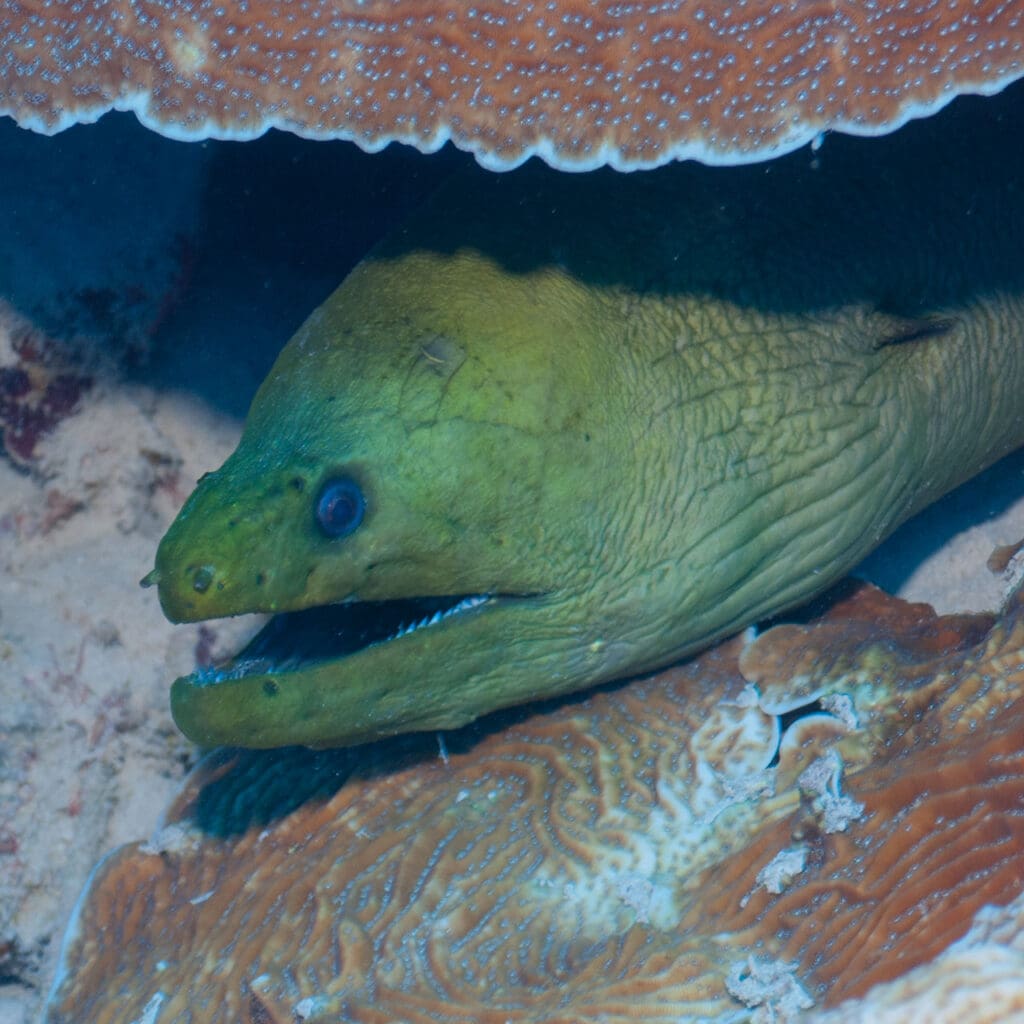Welcome back to another episode of #fff or Friday Fish Facts!
The green moray eel (Gymnothorax funebris) is a creature that looks like it swam straight out of a alien horror movie. It is one of the largest moray eels in the Atlantic, reaching up to 8 feet long and weighing as much as 65 pounds. Some of them can literally be as big around as a grown man’s thigh. But don’t let its size intimidate you—this fascinating fish is more misunderstood than menacing.
Fun fact: Green morays aren’t actually green. Their skin is a dull brown, but they secrete a yellowish mucus that coats their bodies, giving them that eerie green glow. This slime isn’t just for show—it helps protect them from parasites and infections while allowing them to glide effortlessly through tight spaces. They move with a hypnotic undulating motion when free swimming, slipping in and out of rocky crevices like ghosts of the reef.
Green moray eels don’t have the best eyesight—in fact, their vision is pretty poor. But they make up for it with an incredible sense of smell. Their nostrils, located at the tip of their snout, allow them to detect prey even in the darkest crevices of the reef.
When it comes to food, green morays are nocturnal hunters. They prefer to lurk in the shadows, waiting for unsuspecting prey to swim too close. Their diet consists of fish, crustaceans like crabs and shrimp, and cephalopods such as squid and octopuses. Instead of chasing down their meals, they rely on stealth and patience, striking with lightning speed when the moment is right. And here’s the kicker—they have two sets of jaws! Their pharyngeal jaws shoot forward to pull prey deeper into their throat, making escape nearly impossible.
As for predators, large green morays have few natural enemies. Their size and stealth make them tough targets, but they’re not completely invincible. Groupers, barracudas, and sharks have been known to prey on them. And, of course, humans pose a threat through fishing and habitat destruction.
If you’re diving near Fort Lauderdale, you’ll likely spot green morays hanging out in coral reefs, rocky coastlines, and even shipwrecks. They prefer depths between 10 to 100 feet, but they can go deeper if the conditions are right. These eels are solitary creatures, spending most of their time tucked away in crevices, only emerging when it’s time to hunt.
Despite their perpetually open mouths and sharp teeth, green morays aren’t aggressive. That gaping mouth isn’t a threat—it’s just how they breathe, passing water over their gills. Most of the time, they’ll ignore divers completely, but if they feel cornered or provoked, they won’t hesitate to defend themselves. Some divers even report encounters with curious and playful green morays that seem to enjoy human interaction.
That said, caution is key. Never stick your hand into a crevice—you might accidentally invade a moray’s personal space, and they won’t appreciate it. Their bite is powerful and can be difficult to escape, thanks to their backward-facing teeth. If you’re lucky enough to spot one free-swimming, admire it from a respectful distance. And whatever you do, don’t feed them—this can encourage unnatural behavior and increase the risk of bites.
Green morays are an essential part of the reef ecosystem, helping to keep fish populations in check. They may look intimidating, but they’re not the villains of the ocean—just misunderstood hunters doing their thing. So next time you’re diving in Fort Lauderdale, keep an eye out for these mesmerizing creatures. With a little respect and caution, you might just have an unforgettable encounter with one of the ocean’s most mysterious residents.

